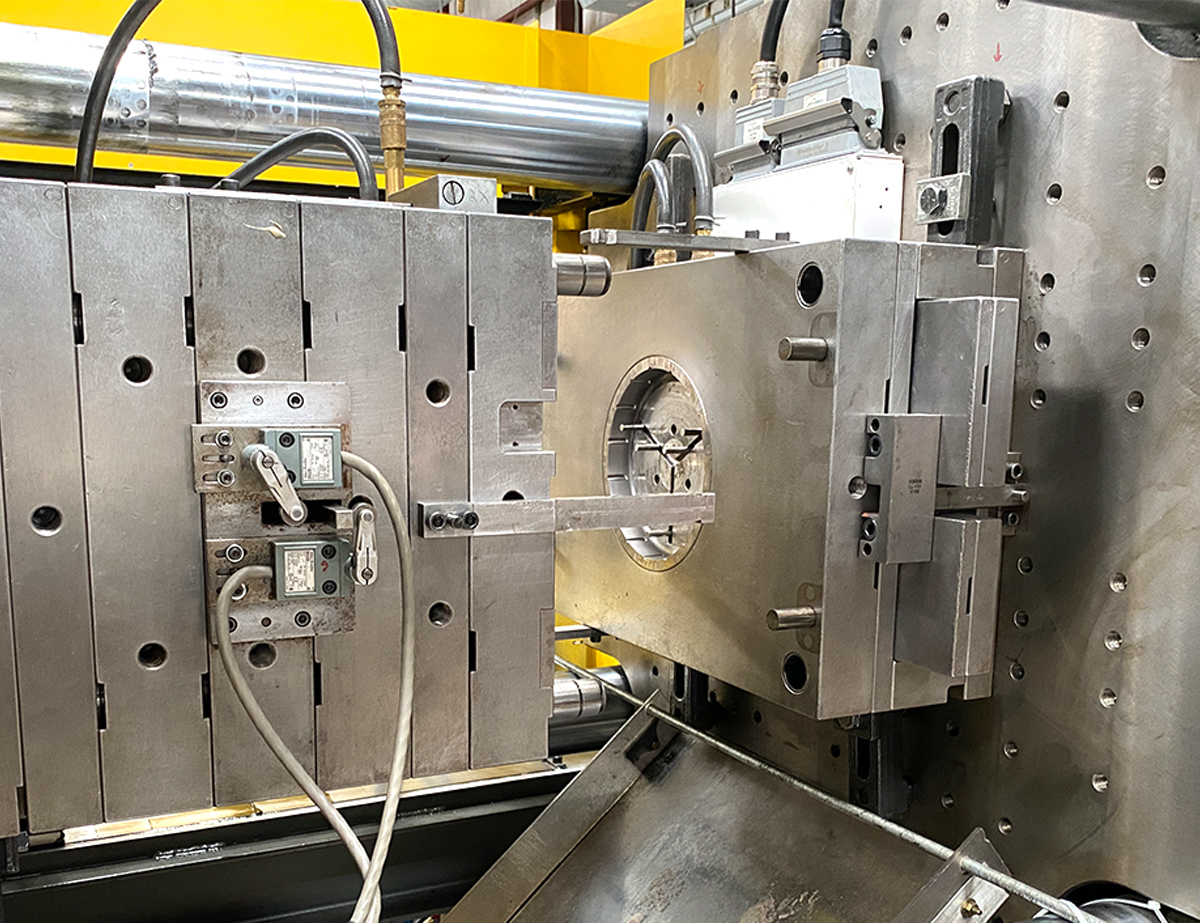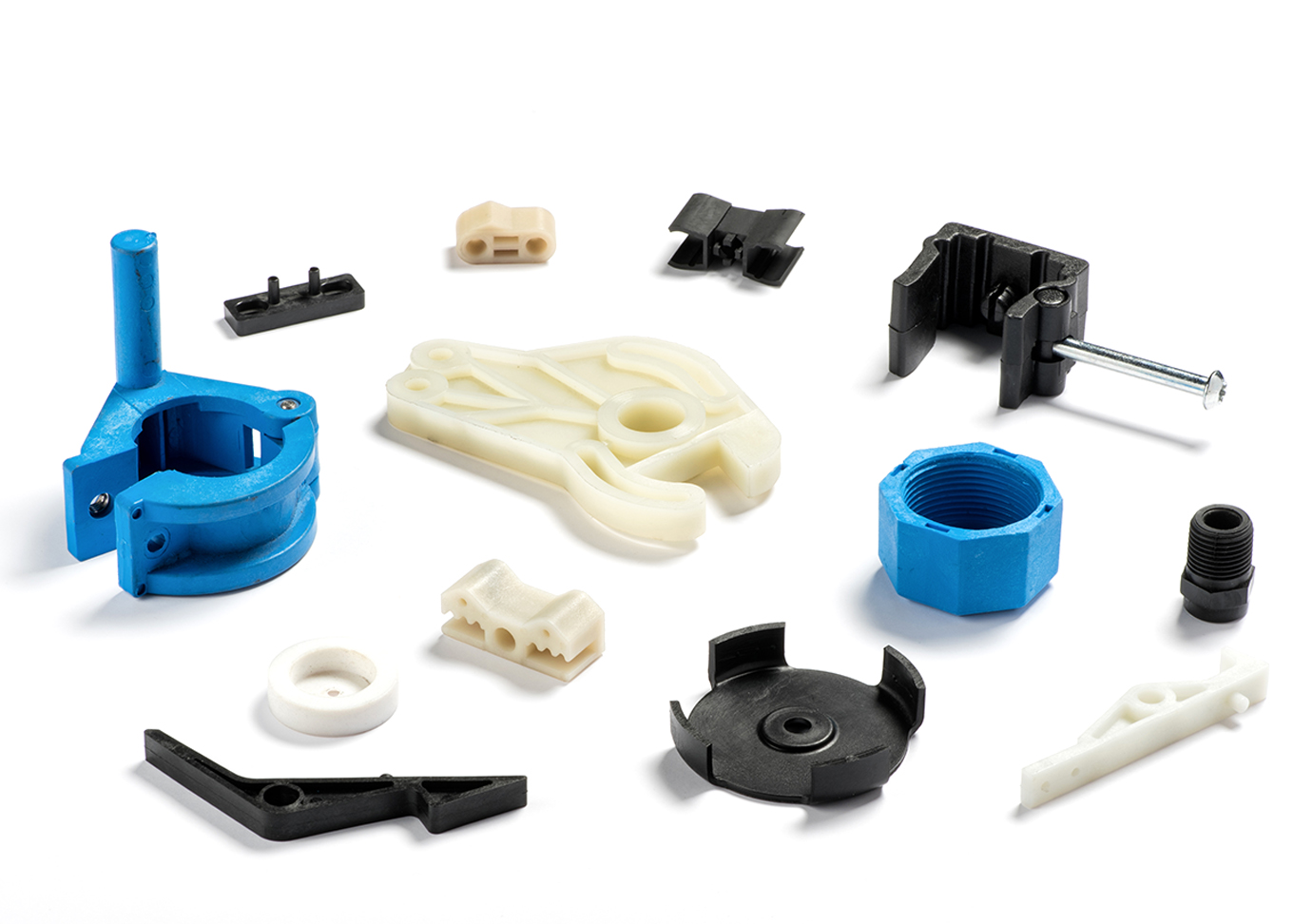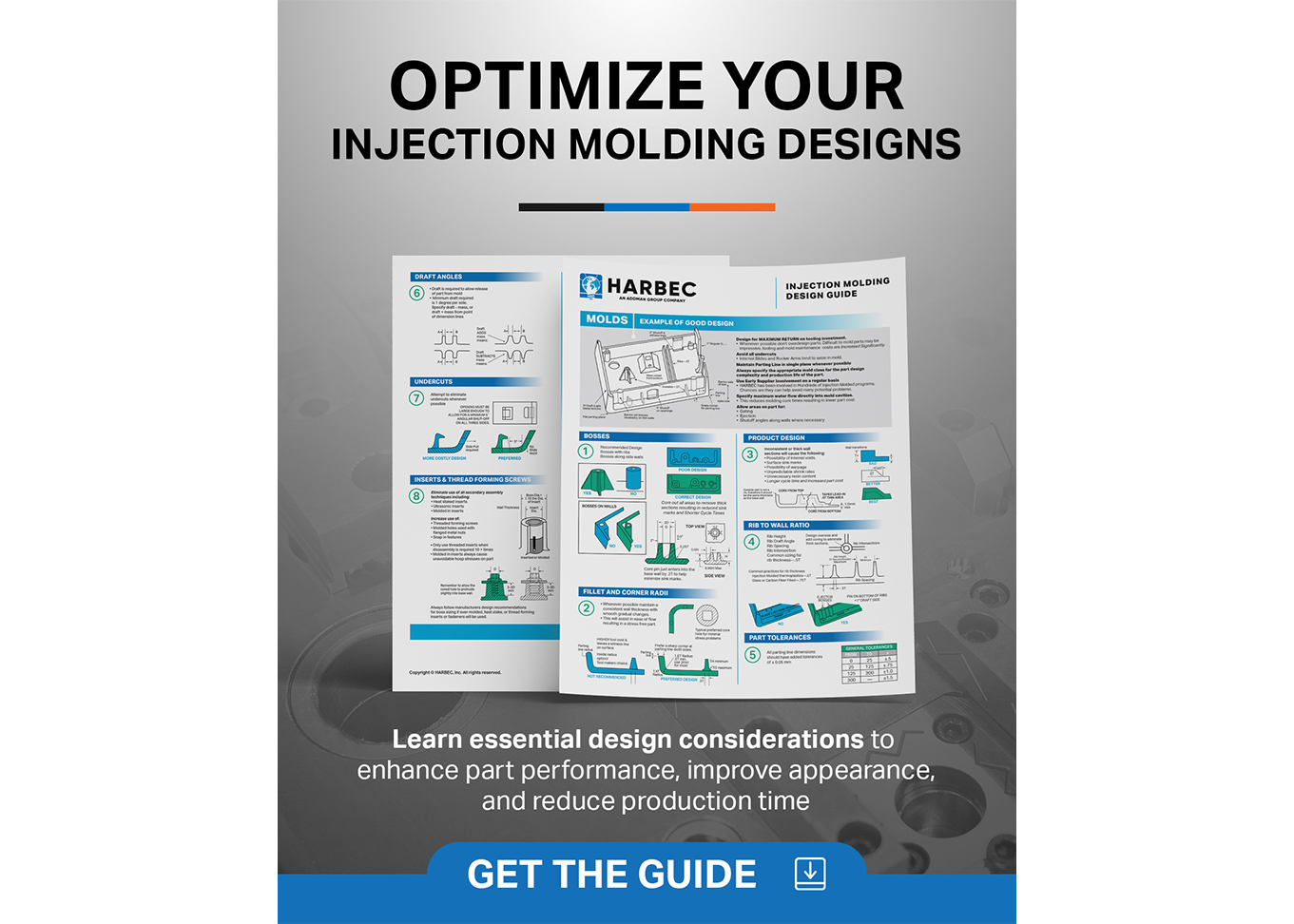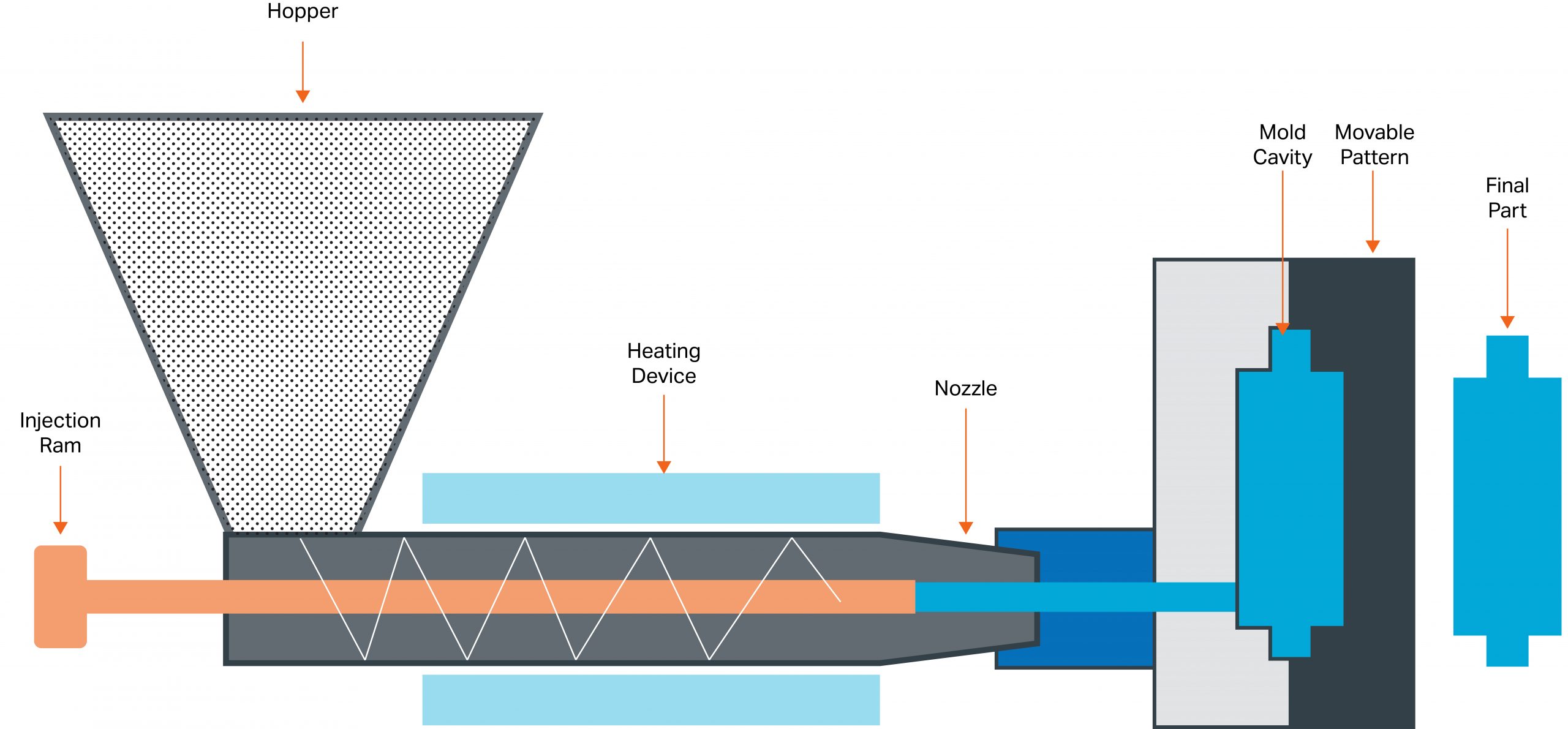Injection molding stands as a pivotal technique essential for crafting diverse parts across industries. As a prominent player in custom injection molding, HARBEC excels in tailoring solutions to a wide array of clientele. Our expertise lies in delivering products with exceptional strength and durability, coupled with swift production capabilities to cater to high-volume demands. HARBEC is fully equipped to address every aspect of a client’s injection molding requirements.



Design Guide: Injection Molding
Unlock the full potential of your projects with our quick-reference guide, with expert insights and essential design considerations curated from our time in business.




Design Guide: Injection Molding
Unlock the full potential of your projects with our quick-reference guide, with expert insights and essential design considerations curated from our time in business.




Design Guide: Injection Molding
Unlock the full potential of your projects with our quick-reference guide, with expert insights and essential design considerations curated from our time in business.




Design Guide: Injection Molding
Unlock the full potential of your projects with our quick-reference guide, with expert insights and essential design considerations curated from our time in business.




Design Guide: Injection Molding
Unlock the full potential of your projects with our quick-reference guide, with expert insights and essential design considerations curated from our time in business.




Design Guide: Injection Molding
Unlock the full potential of your projects with our quick-reference guide, with expert insights and essential design considerations curated from our time in business.




Design Guide: Injection Molding
Unlock the full potential of your projects with our quick-reference guide, with expert insights and essential design considerations curated from our time in business.




Design Guide: Injection Molding
Unlock the full potential of your projects with our quick-reference guide, with expert insights and essential design considerations curated from our time in business.




Design Guide: Injection Molding
Unlock the full potential of your projects with our quick-reference guide, with expert insights and essential design considerations curated from our time in business.




Design Guide: Injection Molding
Unlock the full potential of your projects with our quick-reference guide, with expert insights and essential design considerations curated from our time in business.




Design Guide: Injection Molding
Unlock the full potential of your projects with our quick-reference guide, with expert insights and essential design considerations curated from our time in business.




Design Guide: Injection Molding
Unlock the full potential of your projects with our quick-reference guide, with expert insights and essential design considerations curated from our time in business.




Design Guide: Injection Molding
Unlock the full potential of your projects with our quick-reference guide, with expert insights and essential design considerations curated from our time in business.




Design Guide: Injection Molding
Unlock the full potential of your projects with our quick-reference guide, with expert insights and essential design considerations curated from our time in business.




Design Guide: Injection Molding
Unlock the full potential of your projects with our quick-reference guide, with expert insights and essential design considerations curated from our time in business.




Design Guide: Injection Molding
Unlock the full potential of your projects with our quick-reference guide, with expert insights and essential design considerations curated from our time in business.




Design Guide: Injection Molding
Unlock the full potential of your projects with our quick-reference guide, with expert insights and essential design considerations curated from our time in business.




Design Guide: Injection Molding
Unlock the full potential of your projects with our quick-reference guide, with expert insights and essential design considerations curated from our time in business.




Design Guide: Injection Molding
Unlock the full potential of your projects with our quick-reference guide, with expert insights and essential design considerations curated from our time in business.




Design Guide: Injection Molding
Unlock the full potential of your projects with our quick-reference guide, with expert insights and essential design considerations curated from our time in business.




Design Guide: Injection Molding
Unlock the full potential of your projects with our quick-reference guide, with expert insights and essential design considerations curated from our time in business.




Design Guide: Injection Molding
Unlock the full potential of your projects with our quick-reference guide, with expert insights and essential design considerations curated from our time in business.




Design Guide: Injection Molding
Unlock the full potential of your projects with our quick-reference guide, with expert insights and essential design considerations curated from our time in business.




Design Guide: Injection Molding
Unlock the full potential of your projects with our quick-reference guide, with expert insights and essential design considerations curated from our time in business.




Design Guide: Injection Molding
Unlock the full potential of your projects with our quick-reference guide, with expert insights and essential design considerations curated from our time in business.




Design Guide: Injection Molding
Unlock the full potential of your projects with our quick-reference guide, with expert insights and essential design considerations curated from our time in business.




Design Guide: Injection Molding
Unlock the full potential of your projects with our quick-reference guide, with expert insights and essential design considerations curated from our time in business.




Design Guide: Injection Molding
Unlock the full potential of your projects with our quick-reference guide, with expert insights and essential design considerations curated from our time in business.




Design Guide: Injection Molding
Unlock the full potential of your projects with our quick-reference guide, with expert insights and essential design considerations curated from our time in business.




Design Guide: Injection Molding
Unlock the full potential of your projects with our quick-reference guide, with expert insights and essential design considerations curated from our time in business.




Design Guide: Injection Molding
Unlock the full potential of your projects with our quick-reference guide, with expert insights and essential design considerations curated from our time in business.




Design Guide: Injection Molding
Unlock the full potential of your projects with our quick-reference guide, with expert insights and essential design considerations curated from our time in business.




Design Guide: Injection Molding
Unlock the full potential of your projects with our quick-reference guide, with expert insights and essential design considerations curated from our time in business.




Design Guide: Injection Molding
Unlock the full potential of your projects with our quick-reference guide, with expert insights and essential design considerations curated from our time in business.




Design Guide: Injection Molding
Unlock the full potential of your projects with our quick-reference guide, with expert insights and essential design considerations curated from our time in business.




Design Guide: Injection Molding
Unlock the full potential of your projects with our quick-reference guide, with expert insights and essential design considerations curated from our time in business.




Design Guide: Injection Molding
Unlock the full potential of your projects with our quick-reference guide, with expert insights and essential design considerations curated from our time in business.




Design Guide: Injection Molding
Unlock the full potential of your projects with our quick-reference guide, with expert insights and essential design considerations curated from our time in business.




Design Guide: Injection Molding
Unlock the full potential of your projects with our quick-reference guide, with expert insights and essential design considerations curated from our time in business.




Design Guide: Injection Molding
Unlock the full potential of your projects with our quick-reference guide, with expert insights and essential design considerations curated from our time in business.




Design Guide: Injection Molding
Unlock the full potential of your projects with our quick-reference guide, with expert insights and essential design considerations curated from our time in business.




Design Guide: Injection Molding
Unlock the full potential of your projects with our quick-reference guide, with expert insights and essential design considerations curated from our time in business.




Design Guide: Injection Molding
Unlock the full potential of your projects with our quick-reference guide, with expert insights and essential design considerations curated from our time in business.




Design Guide: Injection Molding
Unlock the full potential of your projects with our quick-reference guide, with expert insights and essential design considerations curated from our time in business.




Design Guide: Injection Molding
Unlock the full potential of your projects with our quick-reference guide, with expert insights and essential design considerations curated from our time in business.




Design Guide: Injection Molding
Unlock the full potential of your projects with our quick-reference guide, with expert insights and essential design considerations curated from our time in business.




Design Guide: Injection Molding
Unlock the full potential of your projects with our quick-reference guide, with expert insights and essential design considerations curated from our time in business.




Design Guide: Injection Molding
Unlock the full potential of your projects with our quick-reference guide, with expert insights and essential design considerations curated from our time in business.




Design Guide: Injection Molding
Unlock the full potential of your projects with our quick-reference guide, with expert insights and essential design considerations curated from our time in business.




Design Guide: Injection Molding
Unlock the full potential of your projects with our quick-reference guide, with expert insights and essential design considerations curated from our time in business.
